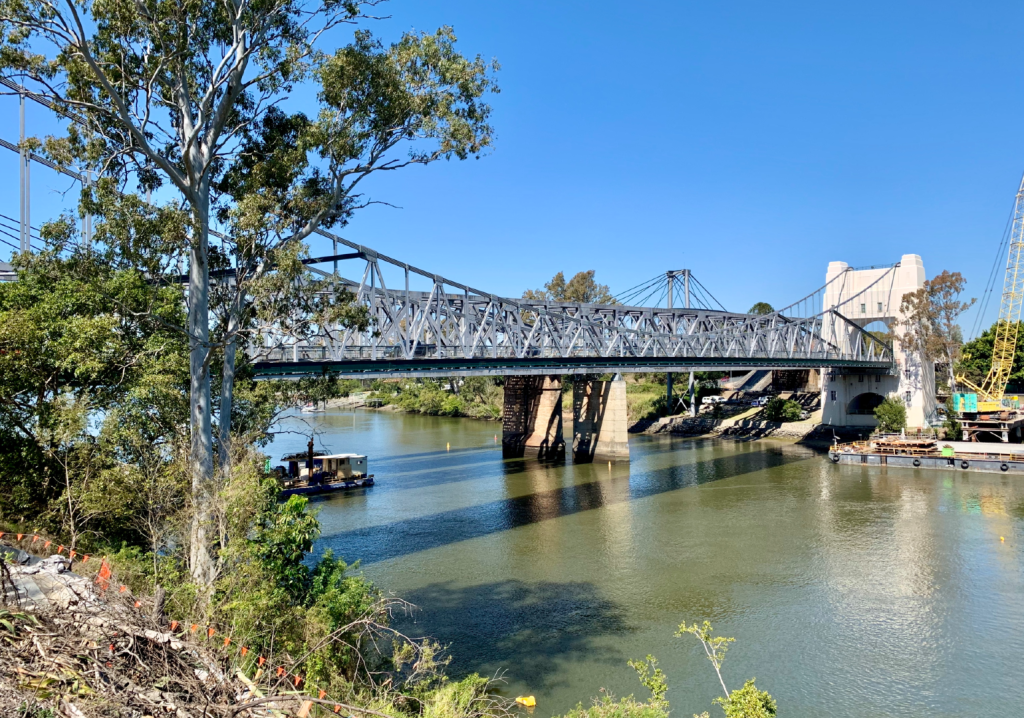The Walter Taylor Bridge was the longest suspension bridge in Australia when completed in 1936 and remains a celebrated Brisbane icon. We take a look behind the scenes at its construction and quirks in its unique design.
Today, the snake-like Brisbane River is adorned with 15 major bridges, from the Sir Leo Hielscher Bridges in the east to Centenary Bridge in the west.
As little as a century ago, however, there was just a single passage for vehicles to use when crossing the river: Victoria Bridge, which connects the CBD to South Brisbane.
Contractor-turned-engineer Walter Taylor changed that when, in 1931, an agreement between the newly established Brisbane City Council and the Queensland Government awarded him permission to establish a new road link between Indooroopilly and Chelmer, southwest of the city.
Owing to two major innovations in its design and construction, the Walter Taylor Bridge offers a unique variation upon a rare design and remains an iconic Australian heritage industrial site.
Design innovations
Taylor adopted a design that applied a technique invented by celebrated American civil engineer D.B. Steinman, who had built a bridge five years earlier in Florianopolis, Brazil, in a style now referred to as a Florianopolis Bridge.
The new bridge diverged from conventional suspension designs by raising the top member of the bottom stiffening truss to join the catenary at the quarter points of the span.
This had the effect of cancelling out some of the opposing forces, enabling cost savings in material.
Read our pick of seven iconic heritage industrial sites from across Australia.
Taylor also replaced the normally-used steel eye bars linked as chains for the suspension, with surplus steel cables left over from the recent construction of the Sydney Harbour Bridge.
The total breaking load for each Sydney Harbour Bridge cable is 350 t, and in the design for Indooroopilly, these operate at a maximum load of only 84 t each.
To achieve this, Taylor had to develop special bolted steel plate joints to connect the suspension cables to the steel channels connecting the bottom stiffening truss. These were successfully tested by Professor R. Hawken at the University of Queensland’s Faculty of Engineering.
Work commenced onsite early the following year, with the pylons completed by March 1935. All cables were in place across the river soon after, and no fatalities had been reported when the project was completed and tested in January 1936.
All major fabrication was carried out onsite, with 1000 t of steel sections and 80,000 rivets used.
The elegant art deco-style pylon structures rise 41.5 m above the foundation and contain nine rooms suitable for habitation, another unusual feature and the only one of its kind in the southern hemisphere.
The northern Indooroopilly pylon housed a three-bedroom apartment, and the southern Chelmer pylon was rented to university students through the 1970s and 80s. Accommodation continued to be leased until 2010.
Although he received no formal training in engineering or construction, Taylor helped connect two sides of the river with an essential traffic link. The new crossing provided tremendous motivation for residential development on the southern side of the river in suburbs such as Chelmer and Graceville.
Taylor’s contribution to cross-river passage in Brisbane was significant and made at a critical time in the city’s development. Although all other bridges using the Florianopolis/Steinman design have since been demolished, the Walter Taylor Bridge, which in 1992 was listed in the Queensland State Heritage Register, has stood firm.
A version of this article originally appeared in the March 2023 edition of the Engineering Heritage Australia magazine.

